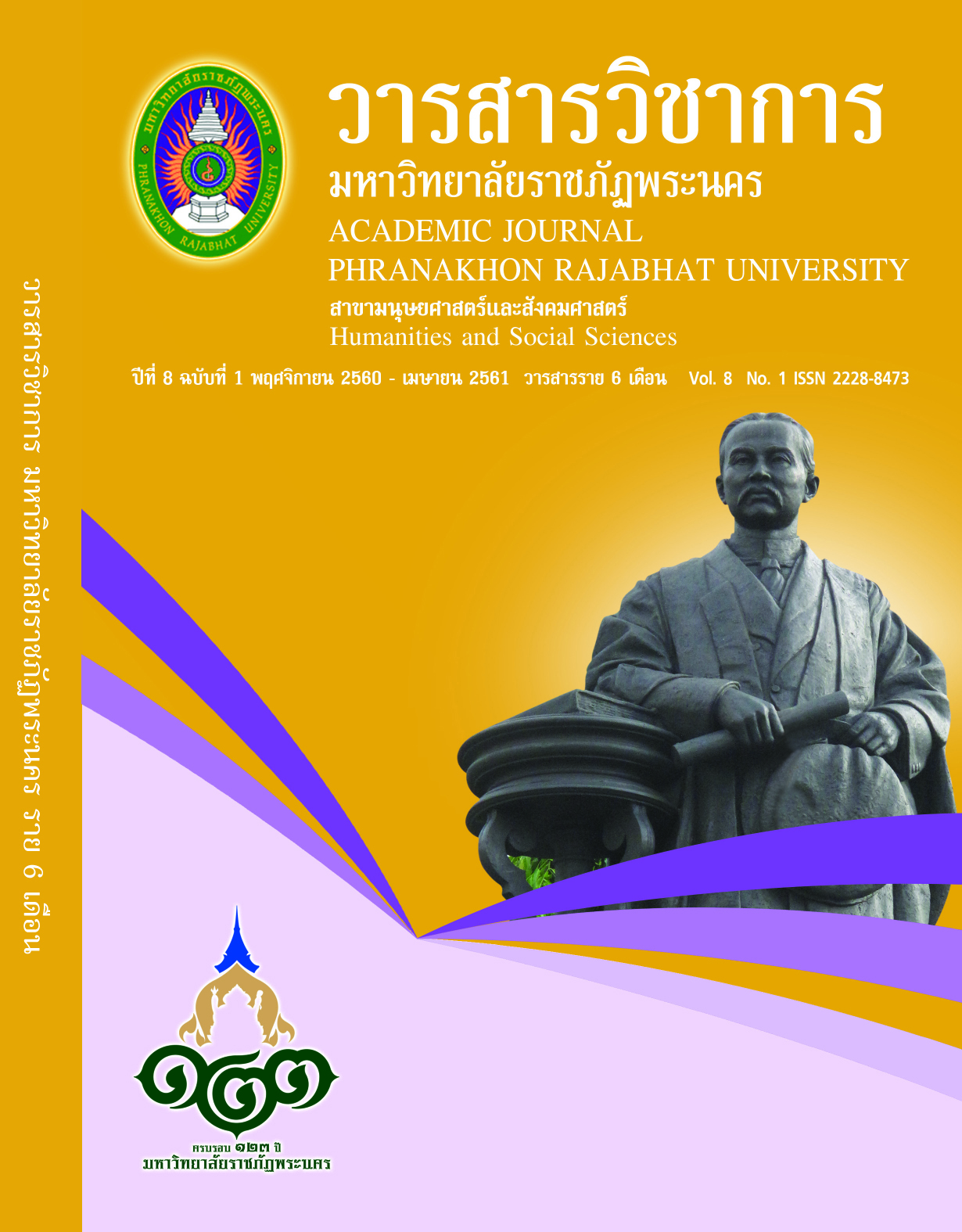วิเคราะห์ลักษณะการแสดงโขนพระราชทานในสมเด็จพระนางเจ้าสิริกิติ์ พระบรมราชินีนาถ
Keywords:
An Analysis of the Khon, Performances Under the patronage of Her Royal Majesty Queen SirikitAbstract
The purposes of this research were: 1) to understand the origins of the Khon performance; 2) to understand its development under the patronage of HRM Queen Sirikit; and 3) to evaluate individual productions of the Phrommat episode staged in 2007, 2009, and 2010 through the study of primary documents and related studies as well as interviews with those involved in the productions.
The research results revealed that: 1) the earliest evidence for the Khon performance appears in the records of the French delegate La Loubere in the late Ayutthaya period, which describes performances involving masked actors and both spoken and sung narration in the style of the Nang Yai or shadow puppet performance. Then, it was transmitted in turn to the Thonburi period and the early Bangkok period, spanning the reigns of King Rama I, Rama II, Rama III, and Rama IV. However, it was modified in the reign of King Rama V to resemble as the Lakhon drama, which has served as the model for Khon performance to the present day. 2) In 2007, HRM Queen Sirikit expressed a desire to revive the Khon performance in time to celebrate HRM King Bhumiphol Adulyadej's 80thbirthday and her own 75th birthday. Afterwards, there was such popular demand for more performances that another production was staged in 2009, with more productions almost yearly ever since. Altogether, 3) the Phrommat episode has been staged three times by royal behest, using the Lakhon dramatic format as the model for performance. As regards scenery, details drawn from the literary text of Phrommat were expressed using modern stage technology and special effects. The productions casted youth performers through open auditions and their costumes were developed through researching methods of production of the early Bangkok period. Face makeup was inspired by traditional mural painting and the construction of the Khon masks themselves. Altogether, these various elements drawn from historical sources were incorporated into productions befitting HRM Queen Sirikit's aspiration to make the Khon performance popular among Thais again.
References
ธนิต อยู่โพธิ์. (2534). เอกสารประกอบการสัมมนาและสาธิตนาฏศิลป์ไทย (2) เฉลิมพระเกียรติพระเทพรัตนราชสุดาฯ สยามบรมราชกุมารี สถาบันไทยคดีศึกษา มหาวิทยาลัยธรรมศาสตร์จัดร่วมกับวิทยาลัยนาฏศิลป กรมศิลปากร. พิมพ์ครั้งที่ 6. กรุงเทพ ฯ : ม.ป.ท.
ประเมษฐ์ บุณยะชัย. (2559). ผู้เชี่ยวชาญนาฏศิลป์ไทย. สัมภาษณ์, 4 เมษายน 2559.
มนตรี วัดละเอียด. (2550). หน้าโขน สมุดภาพการแต่งหน้าโขนจามพระราชดำริในสมเด็จพระนางเจ้าสิริกิติ์ พระบรมราชินีนาถ. กรุงเทพฯ : โรงพิมพ์กรุงเทพฯ.
มนตรี วัดละเอียด. (2559). สัมภาษณ์, 5 พฤษภาคม 2559.
สุดสาคร ชายเสม. (2559). สัมภาษณ์, 7 เมษายน 2559.
สุรัตน์ จงดา. (2559). สัมภาษณ์, 15 กุมภาพันธ์ 2559.
Downloads
Published
How to Cite
Issue
Section
License
"บทความวิชาการในวารสารฉบับนี้ ถือเป็นความรับผิดชอบของผู้เขียนเท่านั้น"
สงวนลิขสิทธิ์ตามพระราชบัญญัติลิขสิทธิ์




